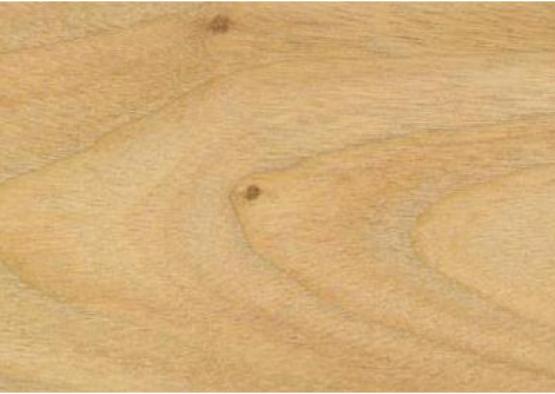Camphor laurel yields a rich honey-coloured hardwood timber with a fresh camphor smell perfect for cutting boards, furniture and cabinetry.
Camphor tree, Camphorwood, Chinese Camphor Wood
Cinnamomum camphora

Camphor laurel yields a beautiful, rich honey-coloured timber with a clean, fresh camphor smell that is perfect for furniture, carving, and cabinetry. The tree is native to Taiwan, southern Japan, southeast China and Indochina, where it has great cultural significance as a source of scent, oil and crystallised blocks for use in religious ceremonies and for medicinal purposes. It is used as a valuable timber for furniture and carving icons.
In Australia, the camphor laurel has a less respectable reputation. The 20 – 30 metre tall evergreen tree was introduced in the 1820s and quickly displaced and inhibited native vegetation. It was widely used for windbreaks and as a measure against soil erosion and as a result has proliferated on disused pasture along the coastal hinterland of NSW and parts of Queensland. It is now categorised as a weed and can easily be identified by its glossy, waxy leaves that smell strongly of camphor when crushed.
Nevertheless, camphor laurel timber is excellent for creating fine furniture. Its heartwood varies widely in colour from pale to mid brown and is often streaked with darker brown or red. The sapwood is very wide and pale brown. The timber’s grain is usually interlocked with a moderately fine and even texture. All camphor laurel wood features the characteristic camphor smell that repels moths and other insects, making it perfect for clothes storage cabinets. Camphor laurel also has antibacterial properties prized for use in crafting handsome chopping and carving boards.
The camphor laurel's extraordinary strong dark grain against a yellow base creates distinctive furniture. In the past it has been exported to Asia and later re-imported as a finished furniture product. It is also recommended for use as slabs in kitchen benchtops, tables and shelves, as well as decorative veneers, internal lining boards and turned or hand-carved bowls.
Shrinkage
| Very Low | Low | Medium | High | Very High | |
|---|---|---|---|---|---|

|

|
||||
Tangential : |
3.50%
|
||||
Radial : |
2.20%
|
||||
Unit Movement Tangential: |
|||||
Unit Movement Radial: |
Strength Group

Very High |
High |
Reasonably High |
Medium High |
Medium |
Reasonably Low |
Low |
Very Low |
||
Unseasoned: |
S1 |
S2 |
S3 |
S4 |
S5 |
S6 |
S7 |
S8 |
|
|---|---|---|---|---|---|---|---|---|---|
 |
|||||||||
Seasoned: |
SD1 |
SD2 |
SD3 |
SD4 |
SD5 |
SD6 |
SD7 |
SD8 |
|
 |
Stress Grade

| Structural No. 1 |
Structural No. 2 |
Structural No. 3 |
Structural No. 4 |
Structural No. 5 |
|
Unseasoned: |
F8 |
F7 |
F5 |
F4 |
|
Seasoned: |
F14 |
F11 |
F8 |
F7 |
F5 |
Density per Standard

Seasoned: |
485kg/m3
|
|---|---|
Unseasoned: |
1000kg/m3
|
Joint Group

Very High |
High |
Reasonably High |
Medium |
Low |
Very Low |
|
Unseasoned: |
J1 |
J2 |
J3 |
J4 |
J5 |
J6 |
|---|---|---|---|---|---|---|
 |
||||||
Seasoned: |
JD1 |
JD2 |
JD3 |
JD4 |
JD5 |
JD6 |
 |
Colour

| White, yellow, pale straw to light brown | Pink to pink brown | Light to dark red | Brown, chocolate, mottled or streaky | |
 |
||||
Mechanical Properties
Modulus of Rupture - Unseasoned: |
|
|---|---|
Modulus of Rupture - Seasoned: |
102
|
Modulus of Elasticity - Unseasoned: |
|
Modulus of Elasticity - Seasoned: |
11
|
Maximum Crushing Strength - Unseasoned:  |
|
Maximum Crushing Strength - Seasoned: |
58
|
Impact - Unseasoned: |
|
Impact - Seasoned: |
|
Toughness - Unseasoned: |
|
Toughness - Seasoned: |
|
Hardness - Unseasoned: |
|
Hardness - Seasoned: |
3.2
|
Durability
| Low | Moderate | Reasonably High | High | |
| (0 - 5 yrs) | (5 - 15 yrs) | (15 - 25 yrs) | (more than 25 yrs) | |
In-Ground: |
 |
|||
| (0 - 7 yrs) | (7 - 15 yrs) | (15 - 40 yrs) | (More than 40 yrs) | |
Above ground: |
||||
| (0 - 20 yrs, usually < 5) | (21 - 40 yrs) | (41 - 64 yrs) | (More than 60 yrs) | |
Marine Borer Resistance: |
Lyctid Borer Susceptibility: |
Susceptible |
|---|---|
Lyctid Borer Susceptibility - Other: |
|
Termite Resistance: |
Fire Properties
| 1 - non-combustible | 2 - reasonably non-combustible | 3 - slightly combustible | 4 - combustible | |
Fire Properties Group |
Group Number - Other: |
3 if used on MDF or particleboard ≥12mm; veneer thickness 0.6-0.85mm
|
|---|---|
Average Specific Extinction Area: |
<250
|
Bushfire Resistance: |
Not Tested
|
A beautiful, often honey coloured timber, camphor laurel heartwood varies widely in colour from pale to mid brown and is often streaked with darker brown or red. The sapwood has many colours ranging from almost white to dark browns and reds. The timber’s grain is usually interlocked with a moderately fine and even texture.
Commonly used for turning and slab type furniture, camphor laurel is often employed in fine furniture design. It is recommended for use as kitchen benchtops, tables and shelves, as well as internal lining boards and turned or hand-carved bowls.
All camphor laurel wood features a characteristic camphor smell that repels moths and other insects, making it perfect for clothes storage cabinets. Camphor also has antibacterial properties prized for use in crafting handsome chopping and carving boards.
Camphor laurel works fairly well but may require sanding to remove torn grain. An excellent timber for turning, it accepts coatings, bends well, and is fixes easily. Take care when gluing as it can be oily.
Allied Forest Products

Creative Timber World

Garde Timber Pty Ltd
Hammer Roo

Matilda Veneer


